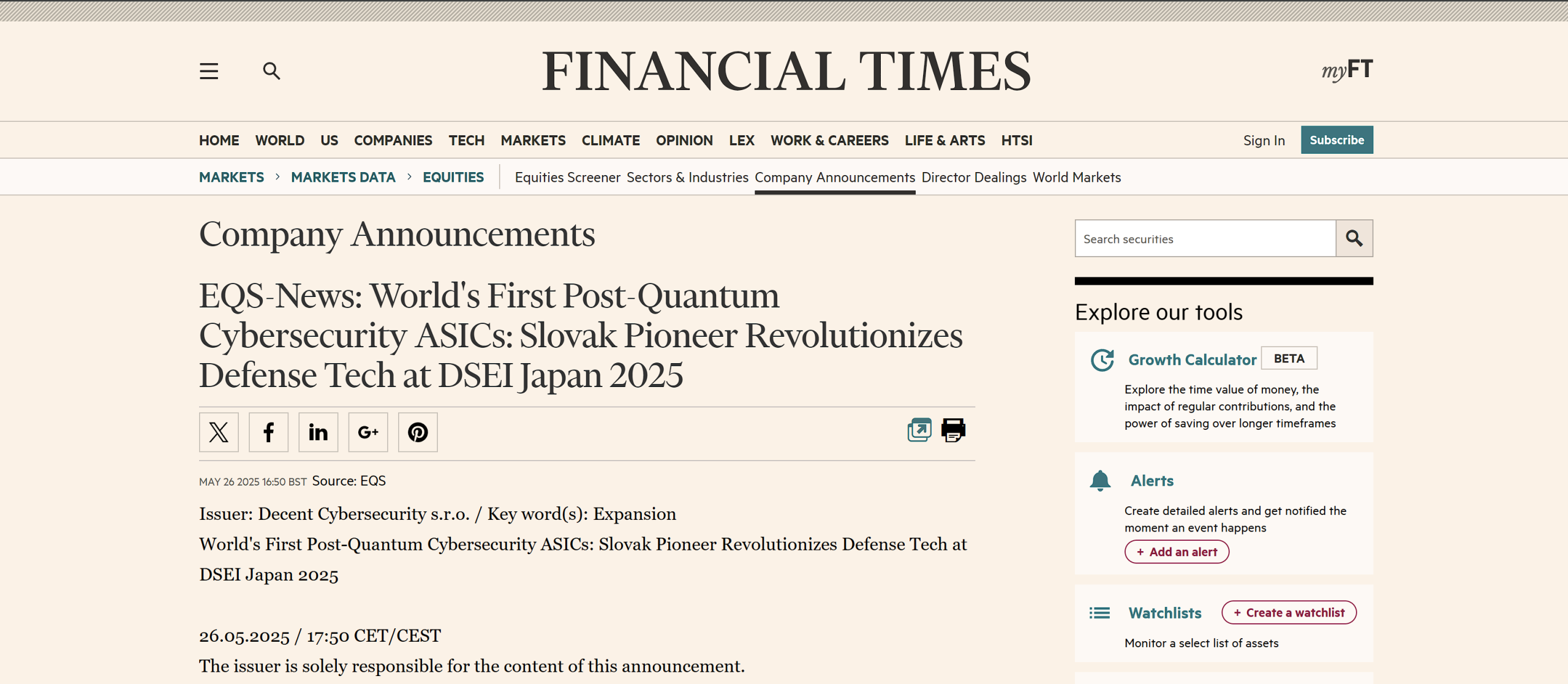How the transatlantic policy divide creates opportunities for European cybersecurity leadership and post-quantum cryptography adoption.
The cybersecurity landscape is experiencing a seismic shift as the Trump administration’s recent executive order dismantles key Biden-era cybersecurity initiatives, creating a stark contrast with Europe’s accelerating digital security agenda. This policy divergence may fundamentally reshape global cybersecurity leadership and standards adoption, marking what could be the most significant realignment of international cybersecurity governance since the emergence of the internet as a critical infrastructure platform.
The implications extend far beyond simple regulatory changes, touching on fundamental questions of technological sovereignty, international cooperation, and the future of digital security standards. As organizations worldwide grapple with increasingly sophisticated cyber threats, the divergent approaches taken by the United States and European Union will likely determine which frameworks become the global standard for cybersecurity governance in the coming decade.
The Great Cybersecurity Divide
On June 6, 2025, President Trump signed an executive order that eliminated several cornerstone cybersecurity programs, including software security attestation requirements for federal contractors, AI-powered cyber defense research priorities, and critically, the accelerated rollout of post-quantum cryptography. The White House characterized these initiatives as “problematic and distracting issues” that prioritized “compliance checklists over genuine security investments.”
The executive order represents a philosophical shift from the Biden administration’s approach, which emphasized federal procurement power as a lever to drive industry-wide security improvements. Under Biden’s framework, the government sought to use its massive purchasing power to incentivize better security practices across the software industry, requiring vendors to provide detailed attestations about their development processes and security controls. This approach was based on the premise that government requirements would create market incentives for improved security practices that would benefit all users, not just federal agencies.
Trump’s reversal of these policies reflects a different philosophy—one that favors market-driven solutions over regulatory mandates. The administration argues that prescriptive requirements stifle innovation and burden companies with compliance costs that don’t necessarily translate to better security outcomes. This approach aligns with broader conservative principles of reducing government intervention in private markets, but it also represents a significant departure from the coordinated, government-led cybersecurity strategy that has characterized US policy since the Obama administration.
Meanwhile, across the Atlantic, the European Union is doubling down on its cybersecurity commitments. Just days before Trump’s order, EU member states adopted the EU Cyber Blueprint for crisis management, reinforcing the bloc’s commitment to coordinated cybersecurity governance. This timing was not coincidental—European policymakers have been watching US political developments closely and positioning the EU as a stable, reliable partner for cybersecurity cooperation.
The European approach emphasizes collective action, shared standards, and coordinated responses to cyber threats. Unlike the US model, which has historically relied on individual agency initiatives and voluntary industry cooperation, the EU framework mandates specific requirements across member states and creates binding obligations for both public and private sector entities. This difference in approach reflects broader cultural and political differences between American individualism and European collectivism, but it also represents different assessments of how best to address the collective action problems inherent in cybersecurity.
Europe’s Strategic Advantage
The timing couldn’t be more significant for European cybersecurity leadership. The EU’s comprehensive approach includes multiple interconnected initiatives that create a robust, unified cybersecurity ecosystem across the continent. This systematic approach contrasts sharply with the more fragmented, agency-by-agency approach that has characterized US cybersecurity policy, even during periods of strong federal leadership.
Regulatory Framework Strength
The NIS2 Directive creates harmonized cybersecurity standards across all 27 member states, establishing a unified approach to critical infrastructure protection that contrasts sharply with the US federal government’s retreat from regulatory oversight. This directive represents one of the most comprehensive cybersecurity regulatory frameworks ever implemented, covering sectors from energy and transportation to digital services and public administration.
What makes NIS2 particularly powerful is its scope and enforceability. Unlike voluntary frameworks or sector-specific regulations, NIS2 creates binding obligations for thousands of organizations across Europe, with significant penalties for non-compliance. The directive requires organizations to implement appropriate cybersecurity measures, report incidents within strict timeframes, and demonstrate ongoing compliance with security requirements. This creates a level of regulatory certainty and consistency that has been lacking in many national approaches to cybersecurity.
The directive also includes supply chain security requirements, mandating that organizations assess and manage cybersecurity risks throughout their vendor relationships. This approach recognizes that modern cyber threats often exploit vulnerabilities in complex, interconnected supply chains rather than targeting individual organizations directly. By requiring comprehensive supply chain risk management, NIS2 creates incentives for improved security practices throughout the European digital ecosystem.
Furthermore, the directive establishes clear governance structures and coordination mechanisms between member states, creating a framework for information sharing, joint incident response, and coordinated policy development. This institutional infrastructure provides a foundation for sustained, long-term cybersecurity cooperation that can adapt to evolving threats and technologies.
Post-Quantum Cryptography Leadership
Perhaps most critically, while the US eliminates requirements for quantum-resistant encryption adoption, European companies are already deploying these technologies. The EU’s Cybersecurity Strategy explicitly emphasizes integrating security into “key technologies like encryption and quantum computing,” positioning Europe as the global leader in preparing for the quantum threat.
The post-quantum cryptography challenge represents one of the most significant cybersecurity transitions in decades. Current encryption methods, which protect everything from online banking to government communications, will become vulnerable once sufficiently powerful quantum computers are developed. While experts debate the timeline for this quantum threat, there is broad consensus that organizations need to begin transitioning to quantum-resistant encryption methods now to ensure long-term security.
European organizations, operating under continued regulatory pressure and policy support for quantum-resistant technologies, are gaining practical experience with post-quantum cryptography implementation that their US counterparts may lack. This experience includes not just technical deployment, but also the complex organizational and operational challenges associated with cryptographic transitions. European companies are developing expertise in managing cryptographic agility, ensuring interoperability between quantum-resistant and traditional systems, and maintaining security during transition periods.
The European approach to post-quantum cryptography also emphasizes standardization and coordination. Rather than leaving individual organizations to navigate the transition independently, European policy frameworks encourage the adoption of common standards and coordinated implementation timelines. This approach reduces the risk of fragmentation and incompatibility that could undermine the security benefits of quantum-resistant cryptography.
Technological Sovereignty Focus
The EU Cybersecurity Strategy for the Digital Decade emphasizes technological sovereignty, aiming to reduce dependence on external cybersecurity solutions while building indigenous capabilities. This focus on sovereignty reflects European concerns about over-reliance on technologies and services from other regions, particularly in critical security domains.
Technological sovereignty in cybersecurity involves multiple dimensions: developing European cybersecurity companies and technologies, ensuring that critical security infrastructure is controlled by European entities, and maintaining the capability to independently assess and validate security technologies. This approach doesn’t necessarily mean excluding non-European technologies, but rather ensuring that Europe has the capability to make independent decisions about its cybersecurity future.
The sovereignty agenda includes significant investments in European cybersecurity research and development, support for European cybersecurity startups and scale-ups, and initiatives to develop European alternatives to critical cybersecurity technologies. These investments are creating a more robust European cybersecurity ecosystem that can compete globally while serving European strategic interests.
The sovereignty focus also extends to standards development and certification. Europe is investing in its capability to develop cybersecurity standards independently and to certify that technologies meet European security requirements. This capability is essential for maintaining control over cybersecurity policy and ensuring that European security needs are adequately addressed by available technologies.
Market Implications and Opportunities
This policy divergence creates several significant market dynamics that will reshape the global cybersecurity industry. The emergence of different regulatory environments in major markets creates both challenges and opportunities for cybersecurity vendors, service providers, and end-user organizations. Understanding these dynamics will be crucial for strategic planning and competitive positioning in the evolving cybersecurity marketplace.
Compliance Complexity
Organizations operating globally now face a bifurcated regulatory environment that requires sophisticated compliance strategies and potentially duplicative security investments. While US federal contractors may experience reduced compliance burdens in some areas, companies serving European markets must navigate increasingly stringent EU requirements. This complexity is particularly pronounced for post-quantum cryptography implementation, where European standards may become the de facto global benchmark.
The compliance challenge extends beyond simply meeting different technical requirements in different jurisdictions. Organizations must also navigate different reporting requirements, incident response procedures, and governance frameworks. This complexity is particularly challenging for multinational organizations that must maintain consistent security postures while complying with divergent regulatory requirements.
For many organizations, the practical response may be to adopt the most stringent requirements globally, rather than maintaining different security postures in different regions. This approach, sometimes called “regulatory arbitrage,” could lead to the global adoption of European cybersecurity standards even in jurisdictions with less stringent requirements. However, this approach also increases costs and complexity for organizations that might otherwise benefit from more flexible regulatory environments.
The compliance complexity also creates opportunities for cybersecurity service providers that can help organizations navigate multiple regulatory frameworks. Companies that can provide integrated compliance solutions covering both US and European requirements may find significant market opportunities as organizations seek to simplify their regulatory compliance processes.
Innovation Investment Shifts
The elimination of US federal AI security research priorities may redirect talent and investment toward European initiatives. The EU’s continued commitment to cybersecurity research and development could attract top-tier cybersecurity professionals and companies seeking stable, long-term policy frameworks. This shift could accelerate European innovation in critical cybersecurity domains while potentially slowing US progress in areas like AI-powered cyber defense.
The investment shift reflects broader patterns in how government policy influences private sector innovation. When governments provide clear, consistent signals about their priorities and create stable funding mechanisms, they can attract private investment and talent that amplifies public investments. Conversely, policy uncertainty or frequent changes in direction can discourage private investment and lead to brain drain as talent seeks more stable environments.
European cybersecurity companies may benefit not only from increased domestic investment but also from the migration of talent and companies from other regions seeking more supportive policy environments. This could accelerate the development of European cybersecurity capabilities and create competitive advantages in emerging technology areas.
The innovation shift also has implications for the development of cybersecurity technologies that serve government and critical infrastructure needs. If European governments maintain strong demand for advanced cybersecurity capabilities while US government demand weakens, European companies may gain advantages in developing and commercializing these technologies.
Standards Setting Authority
With the US stepping back from regulatory leadership, European standards organizations and the EU’s cybersecurity framework may fill the vacuum, potentially establishing European approaches as global best practices. This shift in standards-setting authority could have long-lasting implications for the global cybersecurity industry, as standards often determine market structure and competitive dynamics.
Standards setting is particularly important in cybersecurity because of the need for interoperability and the network effects that favor widely adopted standards. When one region’s standards become dominant globally, companies from that region often gain competitive advantages because they have early experience with those standards and may hold relevant intellectual property.
The European approach to standards development emphasizes multi-stakeholder processes, transparency, and alignment with broader policy objectives like privacy protection and technological sovereignty. These characteristics may make European standards more attractive to other regions seeking alternatives to standards developed in more commercially-driven or less transparent processes.
However, standards setting authority also depends on market power and technological leadership. While Europe has strong regulatory frameworks and policy coherence, the ultimate success of European standards will depend on the ability of European organizations to develop and deploy superior cybersecurity technologies that demonstrate the value of European approaches.
The Post-Quantum Cryptography Race
The most significant long-term implication may be in post-quantum cryptography adoption, where the policy divergence between the US and Europe could determine global leadership in one of the most critical cybersecurity transitions of the coming decades. Trump’s elimination of accelerated PQC requirements comes at a critical time when quantum computing advances threaten current encryption methods, potentially creating a window of vulnerability that adversaries could exploit.
The post-quantum cryptography transition involves replacing current encryption algorithms, which are vulnerable to quantum computers, with new algorithms that remain secure even against quantum attacks. This transition is technically complex, requiring careful planning, extensive testing, and coordinated implementation across interconnected systems. Organizations that begin this transition early will gain experience and expertise that provides competitive advantages, while those that delay may face rushed implementations that compromise security or functionality.
European companies and organizations, operating under continued regulatory pressure to adopt quantum-resistant technologies, may gain a substantial first-mover advantage in this crucial security domain. This advantage includes not only technical expertise but also practical experience with the operational challenges of cryptographic transitions. European organizations are developing capabilities in cryptographic agility—the ability to quickly transition between different cryptographic algorithms as threats and technologies evolve.
The European approach to post-quantum cryptography also emphasizes international cooperation and standardization, working closely with organizations like the US National Institute of Standards and Technology (NIST) to develop common standards. However, if US government adoption of these standards slows due to policy changes, European organizations may gain practical experience that US organizations lack, potentially creating competitive advantages in global markets.
The post-quantum transition also has implications for cybersecurity supply chains. Organizations that develop quantum-resistant capabilities early may become preferred suppliers for security-conscious customers, while those that lag may find themselves excluded from sensitive applications. This dynamic could reshape competitive relationships in the cybersecurity industry and create new market leaders.
Geopolitical Ramifications
The cybersecurity policy divergence between the US and Europe reflects broader geopolitical trends and has implications that extend far beyond technical security considerations. European Parliament members have already raised concerns about US data protection standards under the Trump administration, questioning whether current US policies can “uphold appropriate standards equivalent to those in the EU.” This skepticism extends beyond cybersecurity to broader questions of digital governance and transatlantic cooperation.
The policy divide also reflects different philosophical approaches to cybersecurity governance: the US emphasis on market-driven solutions versus the EU’s preference for regulatory frameworks and coordinated responses. These different approaches reflect deeper cultural and political differences about the appropriate role of government in addressing collective security challenges and the balance between individual freedom and collective security.
The geopolitical implications extend to alliance relationships and international cooperation on cybersecurity issues. If the US and Europe develop significantly different approaches to cybersecurity governance, it may become more difficult to coordinate responses to international cyber threats or to develop common positions in international forums. This fragmentation could benefit adversaries who can exploit differences between allied approaches.
However, the policy divergence also creates opportunities for Europe to strengthen relationships with other regions that prefer regulatory approaches to cybersecurity governance. Countries and regions that are developing their own cybersecurity frameworks may find European approaches more attractive than US approaches, particularly if they prioritize government oversight and coordinated responses over market-driven solutions.
The cybersecurity policy divide also intersects with broader technology competition between the US, Europe, and other regions. As cybersecurity becomes increasingly important for economic competitiveness and national security, the regions that develop the most effective cybersecurity capabilities may gain broader advantages in technology competition and economic development.
Looking Forward: A New Cybersecurity Order?
As these policy trajectories diverge, several key questions emerge that will shape the future of global cybersecurity governance. The answers to these questions will determine not just the technical evolution of cybersecurity practices, but also the geopolitical and economic implications of cybersecurity policy choices.
Will European cybersecurity standards become the global default for multinational organizations? The answer depends partly on the relative effectiveness of European versus US approaches, but also on market dynamics and the preferences of organizations operating in multiple jurisdictions. If European standards prove more effective at preventing cyber incidents or if they become necessary for accessing European markets, they may become global defaults regardless of their technical merits.
How will the post-quantum cryptography transition proceed without coordinated US-EU efforts? The quantum threat affects all organizations globally, and the transition to quantum-resistant cryptography requires international coordination to ensure interoperability and avoid fragmentation. If US and European approaches diverge significantly, it could create compatibility problems that undermine the security benefits of quantum-resistant cryptography.
Can European cybersecurity companies capitalize on this regulatory advantage to gain global market share? European companies may benefit from early experience with stringent regulatory requirements and advanced technologies like post-quantum cryptography, but their success in global markets will also depend on their ability to compete on cost, functionality, and innovation. Regulatory advantages can provide a foundation for market success, but they must be combined with competitive products and services.
The emergence of a new cybersecurity order will also depend on the responses of other major regions and countries. China, India, and other major economies are developing their own cybersecurity frameworks, and their choices about whether to align with US or European approaches could determine which models become globally dominant.
Conclusion
The Trump administration’s cybersecurity policy rollback represents more than a simple regulatory change—it’s a fundamental shift that may accelerate European leadership in global cybersecurity governance. As the US federal government steps back from prescriptive cybersecurity requirements, Europe’s continued commitment to comprehensive security frameworks, post-quantum cryptography, and technological sovereignty positions the EU as the emerging standard-setter for responsible cybersecurity practices.
This transition is occurring at a critical moment in the evolution of cybersecurity threats and technologies. The emergence of quantum computing, artificial intelligence, and other advanced technologies is creating new security challenges that require coordinated responses and forward-looking policies. The region that develops the most effective approaches to these challenges may gain lasting advantages in cybersecurity and broader technology competition.
For organizations worldwide, this shift demands careful attention to evolving compliance requirements and strategic consideration of which cybersecurity standards will ultimately prevail in the global marketplace. The early indicators suggest that European approaches may increasingly define the future of cybersecurity governance, but the ultimate outcome will depend on the effectiveness of different approaches and the choices made by organizations, governments, and other stakeholders worldwide.
The cybersecurity policy divergence between the US and Europe also highlights the importance of cybersecurity in broader geopolitical and economic competition. As digital technologies become increasingly central to economic activity and national security, the countries and regions that develop the most effective cybersecurity capabilities may gain significant advantages in global competition. The current policy divergence may therefore represent not just a difference in regulatory approach, but a competition for leadership in one of the most critical domains of 21st-century governance.







